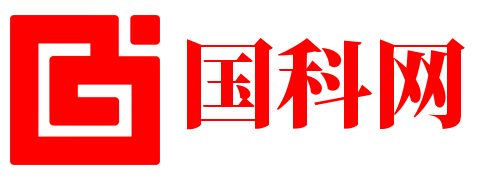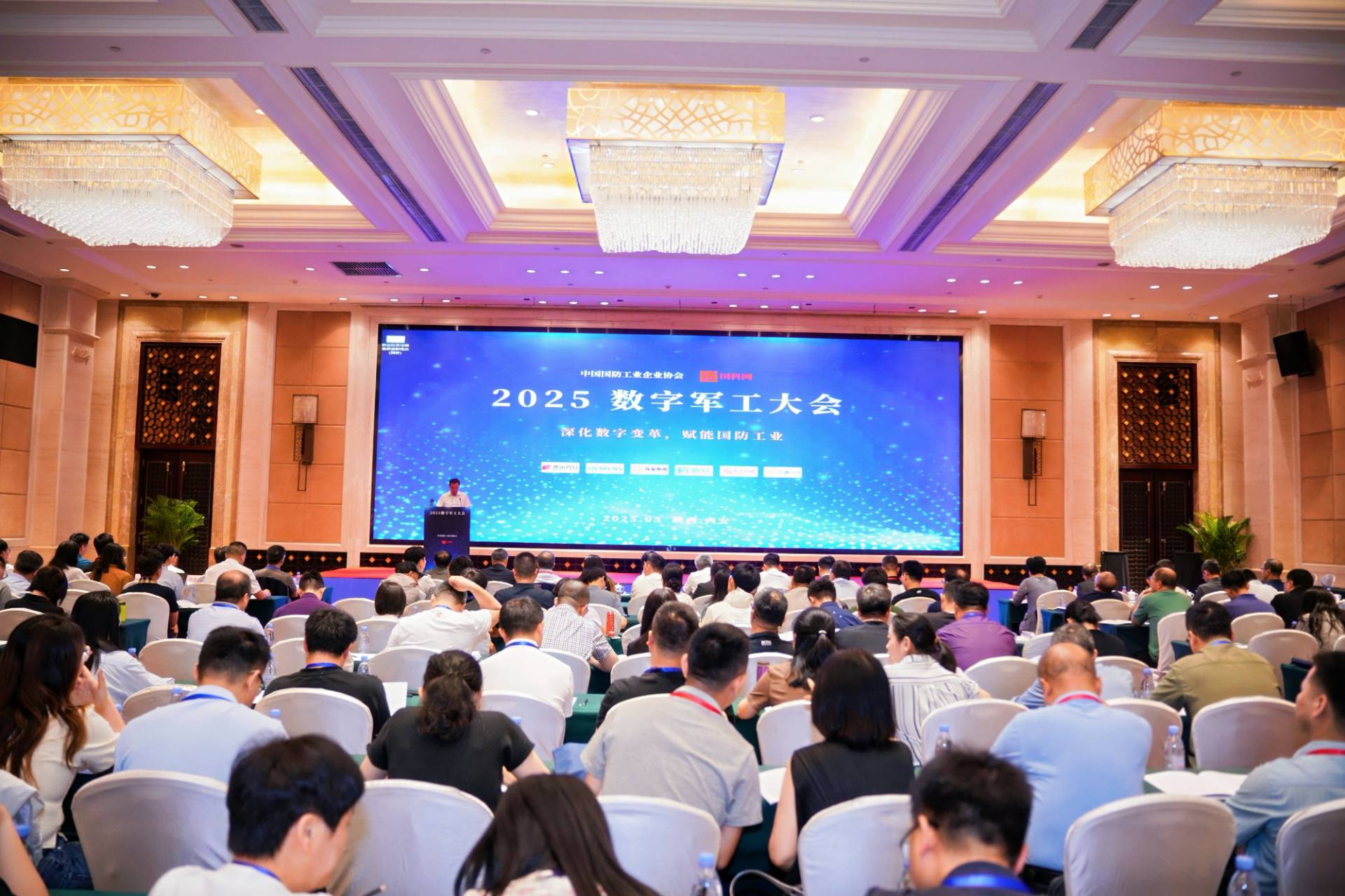1月5日,国资委组织召开中央企业负责人会议,会议明确:为加快中央企业高质量发展,将中央企业经营指标体系优化为“一利五率”,目标为“一增一稳四提升”,即利润总额增长,保持资产负债率稳定,净资产收益率、研发投入强度、全员劳动生产率、营业现金比率实现提升。
可以说,这已经是国资委连续几年对经营指标结构进行的优化结果,目标很清晰,在抓住企业“资产负债率”这一安全风险牛鼻子的基础上,回归企业本质,通过绩效指标将中央企业逐步向市场运营公司方向牵引,推动各大央企高质量发展。
一、如何看待经营指标结构的变化
熟悉中央企业的朋友们应该能够感受到,随着国资系统经营指标结构的逐年调整,企业为满足经营指标要求,各大央企年度绩效分解、年度结算工作也越来越认真,越来越复杂。
绩效分解,是为了保证年度经营合并结果,能够支持国资委各项经营考核指标要求;年度结算的往复挖掘、字斟句酌,是为了解决各项指标结构之间相互关联、勾稽关系造成的失衡问题。这就是结构合理绩效指标的作用,好的绩效管理能够牵引企业的发展方向,促进企业向预期方向发展。
在中央企业的历史上曾经出现过很多现象,但整体都在向好的方向发展,譬如:追求规模增长期间,也出现过融资性贸易、签订低质量合同等问题,所以才有了国资委严查、严禁中央企业开展该类活动的限制政策。也曾出现过利润大幅增长、营收增速远低于利润增速的现象,很多人认为是“降本增效”带来的结果,有这方面的原因,但更重要的是经营指标结构之间的关系,造成了利润的透明。
我们看看2023年相对2022年经营指标发生了哪些变化。
一是保留利润总额增长指标,取消净利润增长指标。保持利润总额增长,可以促进企业的市场开发能力,避免企业为追求规模而进行的低价销售,防控有收入无利润的风险,有利于牵引企业向市场投放高附加值产品和服务,有利于提高企业竞争力。取消净利润指标,有利于强化企业自主经营能力。
二是取消营业收入利润率指标,增加净资产利润率指标。营业收入利润率是反映盈利能力的比率指标,既不能反映营收规模也不能反映利润规模,没有太大意义。净资产利润率,可以反映企业资产经营能力、盈利能力,也可以反映资本回报率,与国资改革方向趋同。
三是增加营业现金比率指标。这个指标非常重要,虽然体现的是现金流,但与利润总额可以形成一定的勾稽关系,可以降低企业经营中有会计利润但经济利润不佳的风险,会计利润是可以做出来的,但现金流的质量是做不出来的。可以降低应收账款、存货“两金增长”风险,反映了推动中央企业向高质量方向发展的意愿。
相对来讲,国资委并没有给中央企业增加太大的压力,但即便如此,由于传导作用,恐怕中央企业下属也会有不少子企业、孙企业能够感受到“自上而下”传导的压力,这就是倒逼和牵引的作用。
二、对部分指标的一点认识与思考
国资委并没有公布具体的评价方法和标准,但不妨碍谈谈对几个指标的看法。
关于利润总额增长率高于GDP增速,与2022年要求基本趋同,但如果考虑两个关联指标可能更好些,即CPI增长和M2的增长,CPI反映物价增长,M2反映购买力增长,有利于将企业、员工认同感与社会总体发展水平保持一致。
关于全员劳动生产率提升。该指标有几种算法,与企业的行业性质有关,但比较常用的是工业增加值/全部从业人员平均人数。该指标的缺陷在于从员工“工作”角度反映附加价值产出,从另一个维度看,有产出越多价值越大的意味,容易引导员工以“工作产出”作为价值衡量基准的可能。如果回归企业本质,企业往往是以“利润总额”为主要衡量基准,容易出现企业与员工观点标准的不一致,特别是在“工业经济时代”向“工业经济+知识经济时代”转变过程中,倒不如用“人均创造利润”指标更为合适。
关于净资产利润率提升。印象上,去年笔者写过一篇文章,其中提到应该用“资产利润率”作为指标的观点,但我讲的是总资产。净资产利润率是近年来经常使用的反映投资回报的指标,但也存在一定的局限性,原因是没有考虑新旧企业之间的不同。譬如:一个固定资产老旧,账面净值假如为“0”的企业,与一个大量配置“高效率固定资产”的高净资产企业相比,落后企业反而会占有优势,净资产收益率的局限性就会充分体现出来而变得没有意义。
理想的状态是,按照“投资”的思维进行设计,即国有资本投入原始总额计算现值,反映的是“总资本利润率”,即可以横向比较,也可以与资本市场平均投资回报(市场化基线)进行比较,更能反映企业的盈利能力和投资回报能力。
关于利润总额、研发投入、营业现金比率都具有适用性,不再赘述。
三、企业如何选择措施
对企业来讲,经过近几年的快速发展,经济规模、盈利能力、增速基本趋于稳定,要保持各项绩效指标继续增长,压力并不太小,需要从企业内部进一步挖掘潜力,而6个指标的核心在于保持利润总额增长,是牵引、辐射其它指标的关键。
企业营业利润受制于所在行业的市场规模、市场份额,以及企业产品与服务的利润率。市场规模由市场环境变化、产业链需求决定,企业无力影响市场环境,但可以影响需求,即用产品与技术的独特性创造客户。
市场份额体现企业在行业内的地位,由客户维护能力、产品与技术的竞争力、客户满意度等条件决定,企业能够做的是,把存量产品做大,并在适当时机推出新产品,保持市场占有率、持续的竞争力和盈利能力。
利润率由产品价格、成本费用决定,取决于企业市场认同力、产品竞争力、快速投放力等条件,以及企业内部管理的先进性。
但这些因素都是“要因”,“真因”在于企业战略规划、经营模式等“原则”的长期坚持,与内部背景产品研发、新产品开发、生产、采购的流程运营、能力与资源配置,以及绩效管理紧密相关。
这就是中国航天运载火箭研究院,能够在十几年时间里,新产品遍地开花、陆续有节奏投放,运载火箭由年发射最大“6-7发”当量,一跃提升到“年50+发”当量,由“发射高紧张”到“100%成功”的重要原因之一。当然,营收的快速增长就不能讲了,也不能说,纪律还是要遵守的。
但,远水解不了近渴,最近的措施,那就是利用好年度绩效指标分解这一工具。当然,绩效分解不能只考虑结果,也需要从过程绩效进行研究、确定,并与人才实现价值增长相结合,从而找到达成最终绩效的路径。
上图是笔者结合“利润”要素,从“风险”维度进行的内化结构分解示意图。风险的结构、表现,就是企业“配置资源、确定关注重点、分解过程绩效”的导向,这就是笔者公众文章中一直提到的“风险管理要贡献价值,风险管理与业务、管理是一体的”基本观点的来源。
数字化转型www.szhzxw.cn
四、结语
对企业来讲,都会经历成长、成熟到发展瓶颈的阶段,即使公认的世界一流企业,如IBM、丰田、福特、通用等,当然也包括今天绽放光彩的中国航天、华为等等。瓶颈阶段的痛苦、焦灼与压力,没有经历过的人很难体会到,而这些企业的可贵和令人尊崇之处,不在于他们当今的成就,而在于从低谷重登高峰的壮举。
建设世界一流企业,实现高质量发展,是中央企业、大型国有企业的追求,也是国家的期望,从国资委经营指标结构的不断调整、优化,能够反映出中央企业发展的预期与方向。2023年已悄然而至,我国也从疫情防控中逐步回归正常。相信,2023年一定又是一个丰收与发展之年,加油、努力!
翻译:
On January 5, the State-owned Assets Supervision and Administration Commission held a meeting of heads of central enterprises, and the meeting made it clear: In order to accelerate the high-quality development of central government enterprises, we will optimize the operation indicator system of central government enterprises into “one profit and five ratios”, with the goal of “one growth and one stability and four improvements”, that is, to increase total profits, maintain a stable asset-liability ratio, and increase return on equity, R&D investment intensity, total labor productivity, and operating cash ratio.
It can be said that this has been the result of the optimization of the management index structure of the State-owned Assets and Supervision Commission for several consecutive years. The goal is clear. On the basis of holding the “asset-liability ratio” of the enterprise as a safety risk, it returns to the essence of the enterprise, gradually draws the central enterprises to the direction of market operation company through performance indicators, and promotes the high-quality development of the major central enterprises.
How to view the change of business index structure
Friends who are familiar with the central enterprises should be able to feel that with the adjustment of the management index structure of the state-owned assets system year by year, the annual performance decomposition and annual settlement of the major central enterprises are becoming more serious and complicated in order to meet the requirements of the management index.
Performance decomposition is to ensure the results of annual business consolidation and support the requirements of SASAC for various business assessment indicators; In order to solve the imbalance problem caused by the interrelation and articulation between the index structure, the reciprocating mining and the word weighing of the annual settlement. This is the function of reasonably structured performance indicators. Good performance management can lead the development direction of enterprises and promote the development of enterprises to the expected direction.
In the history of central enterprises, there have been many phenomena, but the overall development is in a good direction. For example, during the pursuit of scale growth, there have also been financing trade, signing of low quality contracts and other problems, so there is the State-owned Assets Supervision and Administration Commission, strictly prohibit the central enterprises to carry out such activities. There have also been large profit growth, revenue growth is much lower than the profit growth phenomenon, many people believe that is the result of “cost reduction and efficiency”, there are reasons for this, but more important is the relationship between the management index structure, resulting in the transparency of profits.
Let’s look at what happens to the operating indicators in 2023 versus 2022.
The first is to retain the total profit growth target, cancel the net profit growth target. Maintaining the growth of total profit can promote the market development ability of enterprises, avoid enterprises to pursue scale of low price sales, prevent the risk of income and no profit, is conducive to attracting enterprises to put high value-added products and services on the market, and improve the competitiveness of enterprises. The elimination of net profit target is conducive to strengthening the independent management ability of enterprises.
The second is to cancel the operating income profit rate index, increase the net asset profit rate index. Operating income margin is a ratio indicator of profitability, which can not reflect the size of revenue or profit, and is not of great significance. The profit rate of net assets can reflect the asset management ability and profitability of an enterprise, as well as the return on capital, which is consistent with the direction of state-owned assets reform.
Third, increase the operating cash ratio index. This index is very important. Although it reflects the cash flow, it can form a articulative relationship with the total profit, which can reduce the risk that the enterprise has accounting profit but poor economic profit in its operation. Accounting profit can be made, but the quality of cash flow cannot be made. It can reduce the risk of “two gold growth” of accounts receivable and inventory, which reflects the will to promote the development of central enterprises to the direction of high quality.
Relatively speaking, the State-owned Assets Supervision and Administration Commission did not put too much pressure on the central enterprises
Relatively speaking, the State-owned Assets Supervision and Administration Commission did not put too much pressure on the central enterprises, but even so, due to the transmission effect, I am afraid that many subsidiaries and grandchildren of the central enterprises can feel the “top-down” transmission pressure, which is the effect of forcing and pulling.
Some understanding and thinking of some indicators
Sasac did not announce specific evaluation methods and standards, but let’s talk about the views of several indicators.
As for the growth rate of total profits being higher than GDP growth, it is basically consistent with the requirement of 2022. However, it may be better to consider two related indicators, namely CPI growth and M2 growth. CPI reflects the growth of price and M2 reflects the growth of purchasing power, which is conducive to keeping the identity of enterprises and employees consistent with the overall level of social development.
Overall labor productivity improvement. There are several algorithms for this indicator, which are related to the industry nature of the firm, but the more common one is industrial value added/average number of all employees. The defect of this index is that it reflects the output of added value from the perspective of employees’ “work”. From another dimension, it means that the more output, the more value, and it is easy to guide employees to take “work output” as the benchmark of value measurement. If we return to the essence of enterprises, enterprises tend to take “total profits” as the main measurement benchmark, which is prone to inconsistency between the viewpoints of enterprises and employees. Especially in the transformation process from “industrial economy era” to “industrial economy + knowledge economy era”, it is more appropriate to use the index of “per capita profit creation”.
On net asset profit margin improvement.
I remember writing last year about the idea of using “return on assets” as a metric. But I’m talking about total assets. Profit rate on net assets is a commonly used indicator of investment return in recent years, but it also has some limitations because it does not take into account the differences between old and new enterprises. For example: an old fixed assets, if the net book value is “0” enterprise, compared with a large allocation of “efficient fixed assets” of high net assets enterprise, backward enterprises will have advantages, the limitations of return on equity will be fully reflected and become meaningless.
Ideally, the design should be carried out in accordance with the thinking of “investment”, that is. The present value of the original total amount of state-owned capital input is calculated, reflecting the “total capital profit rate”. Which can be compared horizontally or with the average return on investment in the capital market (marketization baseline). So as to better reflect the profitability and return on investment ability of enterprises.
The total profit, research and development investment, operating cash ratio are applicable, no more details.
How do enterprises choose measures
For enterprises, after the rapid development in recent years, economic scale, profitability and growth rate tend to be basically stable. To maintain the continuous growth of various performance indicators. The pressure is not too small, and it is necessary to further tap the potential from within the enterprise. The core of the six indicators is to maintain the growth of total profit. Which is the key to draw and radiate other indicators.
Operating profit is subject to the market size and share of the industry in which it operates. As well as the profit margins on its products and services. The market size is determined by the change of market environment and the demand of industrial chain. Enterprises cannot influence the market environment, but they can influence the demand. Which means to create customers with the uniqueness of products and technologies.
Market share reflects an enterprise’s position in the industry and is determined by customer maintenance ability, product and technology competitiveness, customer satisfaction and other conditions. What an enterprise can do is to expand the stock of products and launch new products at appropriate times to maintain market share, sustained competitiveness and profitability.
Profit margin is determined by product price and cost, and depends on the market recognition, product competitiveness, rapid delivery and other conditions, as well as the advanced nature of the enterprise’s internal management.
However, these factors are “essential causes”, while the “true cause” lies in the long-term adherence of “principles” such as enterprise strategic planning and business model
However, these factors are “essential causes”, while the “true cause” lies in the long-term adherence of “principles” such as enterprise strategic planning and business model, which are closely related to internal product research and development, new product development, production, procurement process operation, capacity and resource allocation, and performance management.
This is one of the important reasons why China Academy of Space Launch Vehicle can. In more than ten years, develop new products everywhere and put them into production one after another in a rhythm. The maximum annual launch yield of carrier rocket has been increased from “6-7 rounds” to “50+ rounds”, and from “high launch tension” to “100% success”. Of course, rapid revenue growth cannot be said, nor can discipline be observed.
However, the most recent measure is to make good use of the tool of annual performance index decomposition. Of course, performance decomposition can not only consider the results. But also need to be studied and determined from the perspective of process performance. And combined with the realization of value growth of talents. So as to find the path to achieve the final performance.
Above is a schematic diagram of the internalized structure decomposition from the dimension of “risk” combined with the element of “profit”. The structure and performance of risk are the guidance of the enterprise to “allocate resources, determine the focus of attention. And decompose the process performance”. This is the source of the basic idea that “risk management should contribute value. And risk management is integrated with business and management” mentioned in the author’s public articles.
Conclusion
For enterprises, they all go through the stage of growth and maturity to the bottleneck of development. Even the recognized world-class enterprises. Such as IBM, Toyota, Ford, General Motors, etc., of course, also include China Aerospace, Huawei and so on. The pain, anxiety and stress of the bottleneck stage are hard for those who have not experienced it to appreciate. And what is valuable and admirable about these companies is not what they are doing today. But what they have done to rise from the bottom to the top.
To build world-class enterprises and achieve high-quality development is the pursuit of central enterprises and large state-owned enterprises, as well as the expectation of the state. The continuous adjustment and optimization of the management index structure of SASAC can reflect the development expectation and direction of central enterprises. The year 2023 has quietly arrived, and China has gradually returned to normal from epidemic prevention and control. I believe that 2023 will be another year of harvest and development. Come on, work hard!









